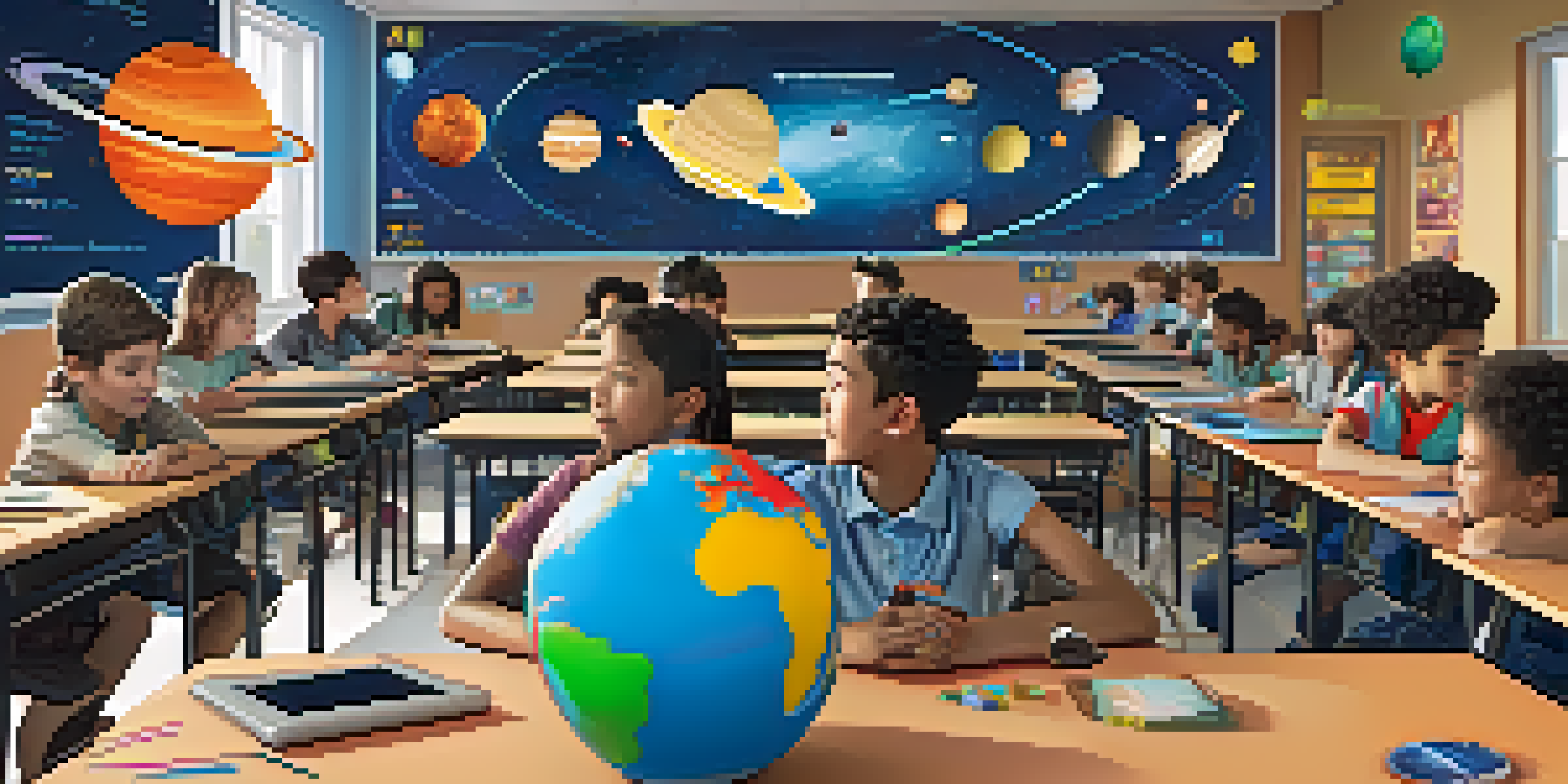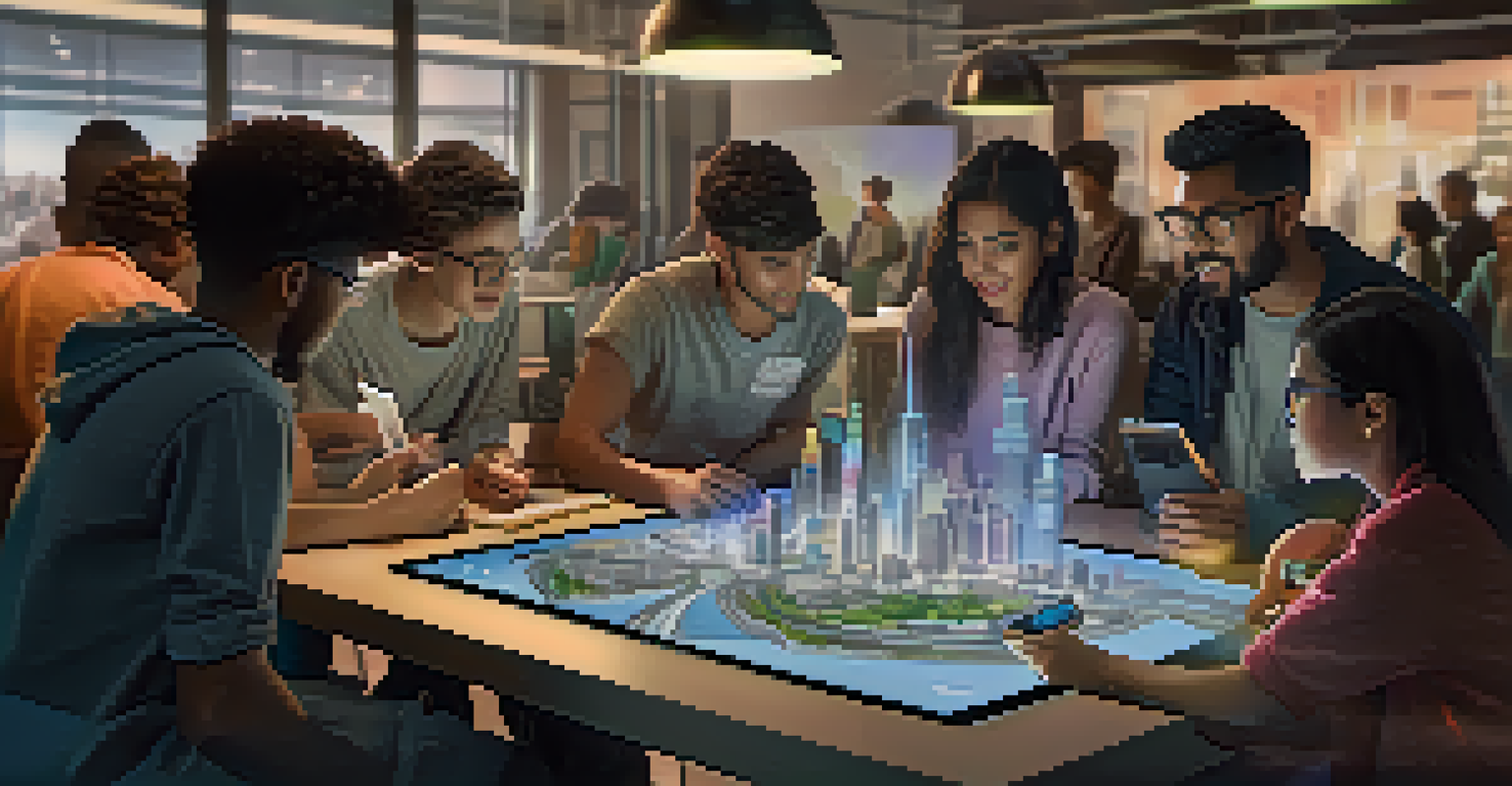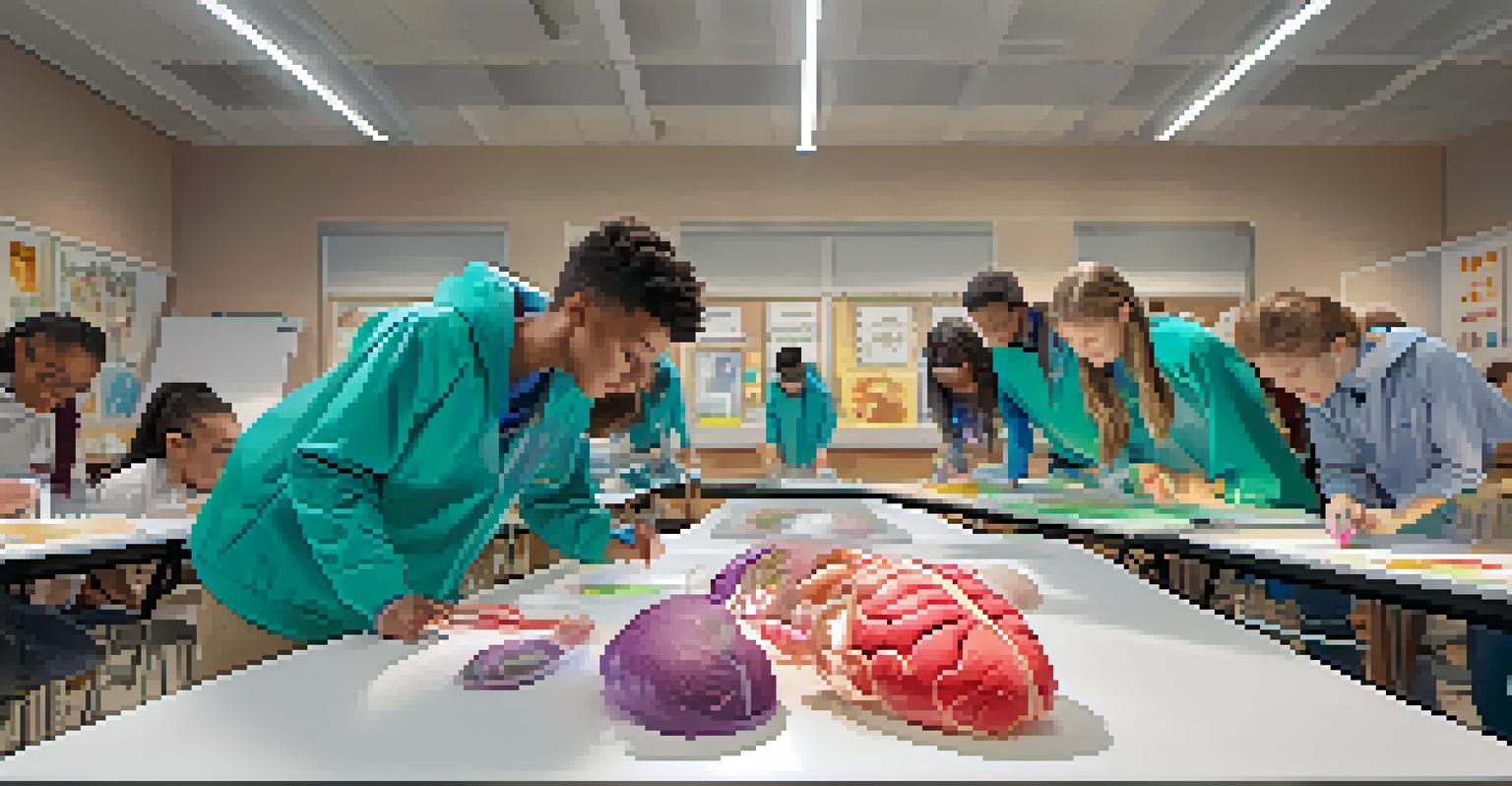Enhancing Problem-Solving Skills with AR Learning Activities

Understanding the Role of AR in Learning Environments
Augmented Reality (AR) is revolutionizing education by merging the digital and physical worlds. This technology allows learners to interact with 3D models and simulations, making abstract concepts more tangible. Imagine studying the solar system not just from a textbook, but by visualizing planets orbiting around you.
Augmented reality is not just about technology; it’s about creating experiences that engage and inspire learners.
With AR, lessons become immersive experiences, engaging students in a way traditional methods often can't. This interaction fosters curiosity and encourages active participation, which are essential for developing problem-solving skills. When students can visualize problems, they are more equipped to tackle them effectively.
Moreover, AR can transform mundane subjects into exciting challenges. By incorporating game-like elements, students are motivated to explore solutions creatively, enhancing their critical thinking and analytical skills in the process.
How AR Encourages Collaborative Problem-Solving
One of the standout features of AR is its ability to promote collaboration among learners. When students work together on AR activities, they share ideas and strategies, which leads to richer problem-solving experiences. For example, they might team up to create a virtual model of a city, addressing challenges like urban planning and resource management.

This collaborative environment helps students learn from one another, exposing them to diverse perspectives and approaches. It fosters communication skills, as they must articulate their thoughts and negotiate solutions within their teams. As they discuss and debate, they refine their own understanding and expand their problem-solving toolkit.
AR Enhances Engagement in Learning
Augmented Reality makes lessons immersive, fostering curiosity and active participation among students.
Additionally, working in teams can instill a sense of accountability and shared purpose. Students are more likely to take risks and experiment with solutions when they know their peers are supporting them, creating a dynamic that enhances learning outcomes.
AR Activities That Sharpen Critical Thinking Skills
Critical thinking is the backbone of effective problem-solving, and AR activities are designed to cultivate this skill. For instance, imagine an AR scenario where students must navigate a maze filled with obstacles, requiring them to apply logic and reasoning to find the best route. This type of engagement encourages them to analyze situations and make decisions based on evidence.
Learning is a treasure that will follow its owner everywhere.
Moreover, AR can simulate real-world challenges, allowing students to experiment with different strategies in a safe environment. By manipulating variables and observing outcomes, learners develop a deeper understanding of cause and effect, which is crucial for solving complex problems. This hands-on experience reinforces theoretical knowledge, making it more applicable in practical situations.
Such activities also prompt students to reflect on their thought processes, which is key to enhancing critical thinking. By evaluating what worked and what didn’t, they learn to approach future problems with a more strategic mindset.
AR Learning: Bridging Theory and Practice
One of the biggest challenges in learning is the gap between theory and practice. AR helps bridge this gap by providing interactive experiences that put theoretical knowledge into action. For instance, in a biology class, students can explore the human body in 3D, observing how different systems interact and function in real time.
This hands-on approach not only solidifies understanding but also encourages students to ask questions and seek deeper insights. They can experiment with various scenarios, such as simulating a medical condition, to see firsthand how it affects the body. This experiential learning is vital for developing problem-solving skills, as it promotes inquiry and exploration.
Collaboration Boosts Problem-Solving
AR encourages students to collaborate, sharing ideas and perspectives that enrich their problem-solving experiences.
Furthermore, AR allows students to apply their knowledge in contexts they might encounter in the real world. By solving realistic problems, they build confidence in their abilities and are better prepared to tackle similar challenges outside the classroom.
The Impact of AR on Retaining Information
Retention of information is crucial for effective problem-solving, and AR activities can significantly enhance this aspect of learning. Studies have shown that immersive experiences lead to better memory recall compared to traditional learning methods. When students engage with content in a dynamic way, they are more likely to remember key concepts long-term.
For instance, when learners interact with a virtual environment, they form connections between new information and prior knowledge, which strengthens memory retention. The multisensory experience of AR—combining visuals, sounds, and physical movements—creates a rich context that makes information stick.
Additionally, the excitement and novelty of AR can motivate students to engage with the material more deeply. This intrinsic motivation fosters a love for learning, making them more likely to revisit concepts and apply them in problem-solving scenarios.
Personalized Learning Through AR Experiences
Every learner is unique, and AR technology allows for personalized learning experiences tailored to individual needs. Adaptive AR platforms can assess a student's progress and provide challenges suited to their skill level, ensuring they're neither bored nor overwhelmed. This personalized approach keeps students engaged and encourages them to take ownership of their learning.
For example, if a student struggles with geometry, an AR application can present them with specific problems to solve using 3D models, guiding their understanding step-by-step. This targeted support nurtures their problem-solving skills by providing just the right amount of challenge.
Personalized Learning with AR
AR technology tailors learning experiences to individual needs, promoting engagement and ownership of the learning process.
By catering to different learning styles, AR fosters an inclusive environment where all students can thrive. Whether visual, auditory, or kinesthetic learners, everyone can benefit from the customized experiences that AR brings to the table.
Future Trends: The Evolution of AR in Education
As technology continues to evolve, the future of AR in education looks promising. Innovations such as improved hardware, software developments, and enhanced interactivity are paving the way for even more engaging learning experiences. This evolution will likely lead to more sophisticated AR applications that can simulate complex environments and scenarios.
With advancements in artificial intelligence, AR could potentially offer real-time feedback and support, guiding students through problem-solving processes as they encounter challenges. Imagine a virtual tutor that adapts to a student's learning pace, providing hints and encouragement when needed.

Moreover, as AR technology becomes more accessible, we can expect to see its integration into various educational settings, from schools to corporate training programs. This democratization of AR learning will enable more people to enhance their problem-solving skills, preparing them for the challenges of the future.